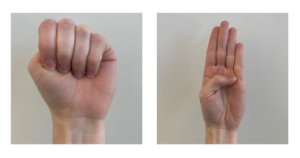Fight or Flight
What is Fight or Flight?
Fight or flight, also called the stress response, is how your body reacts when it feels threatened or in danger. Your body goes through a series of physical changes to help you either fight the danger or escape from it.1 Other reactions an individual might have when the stress response is activated is to freeze or fawn. Freezing occurs when someone feels stuck, as if their body is frozen in place, while fawning is when a person tries to resolve the conflict by pleasing the other person. 2
Bodily Responses During Fight or Flight
There are a number of physical changes that occur in the body when the fight or flight response is activated. Your body focuses on enhancing functions that help you survive, while it slows down or shuts off systems that aren’t needed in that moment. Click on the icons below to learn more about the immediate physical changes that occur in the body. 1, 3
Fight or Flight and Domestic Violence
Individuals who have experienced domestic violence can often be stuck in a prolonged state of fight or flight due to their frequent exposure to different types of threatening situations.4 While this response is important for maintaining your safety, remaining in a prolonged state of fight or flight can have many negative impacts on your health. Long-term health impacts include: 1, 3, 5
- Increased risk of heart attack or stroke
- Shortness of breath
- Diarrhea or constipation
- Headaches
- Weakened immune system
- Decreased sexual desire, reduced fertility, and changes in menstrual cycle
- Increased risk of mental health conditions such as depression or anxiety
- Difficulty sleeping
- Increased risk of obesity
What Does it Mean to “Flip your Lid”?
In addition to increased risks of various long-term health impacts, individuals who are frequently in a stage of fight or flight may also feel it is much easier to “flip their lid”. This phrase refers to when an individual’s thinking brain, or prefrontal cortex, shuts off and their emotional brain, or amygdala, turns on and controls how they respond to a situation. Overtime the brain of someone who has been exposed to repeated trauma may start to process information incorrectly and go into a state of fight or flight even when there is no danger present. As a result, individuals may respond to situations with “anger, irritability, heightened startle response, withdrawal or fear”.2 Review the image below for more information on “flipping your lid”.

How to Regulate out of Fight or Flight
There are several different strategies you can use to help regulate your body out of a state of fight or flight. These strategies may work differently for everyone, so it’s important to find one that works best for you. How often you use these strategies will also vary. If you start noticing symptoms (e.g. racing heart or quicker breathing), it’s a good time to try one of these techniques.3, 5-6 Click on the chart below to learn more.
Key Takeaways
- Survivors of domestic violence can often be stuck in a prolonged state of fight or flight.
- Individuals in a prolonged state of fight or flight may experience many negative health outcomes and find it is easier for them to “flip their lid” in various situations.
- Strategies for regulating out of fight or flight include implementing relaxation techniques, exercise, and engaging with social support.
